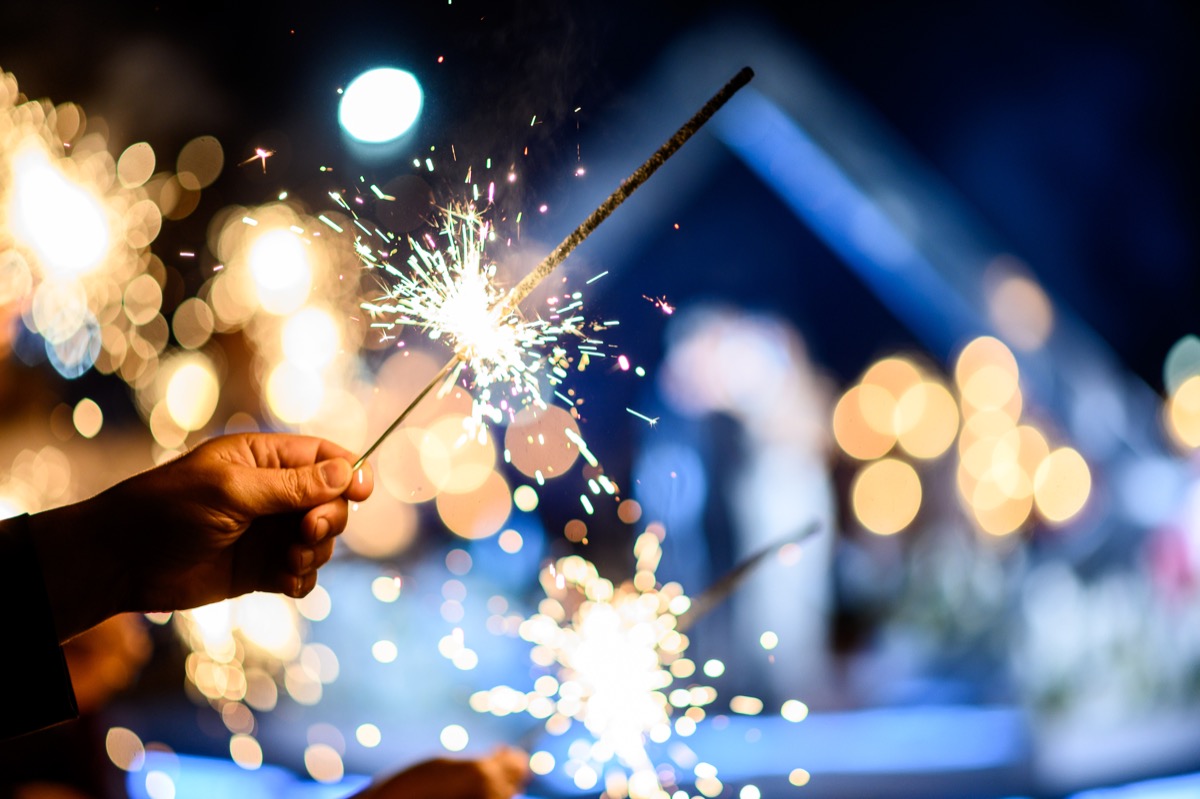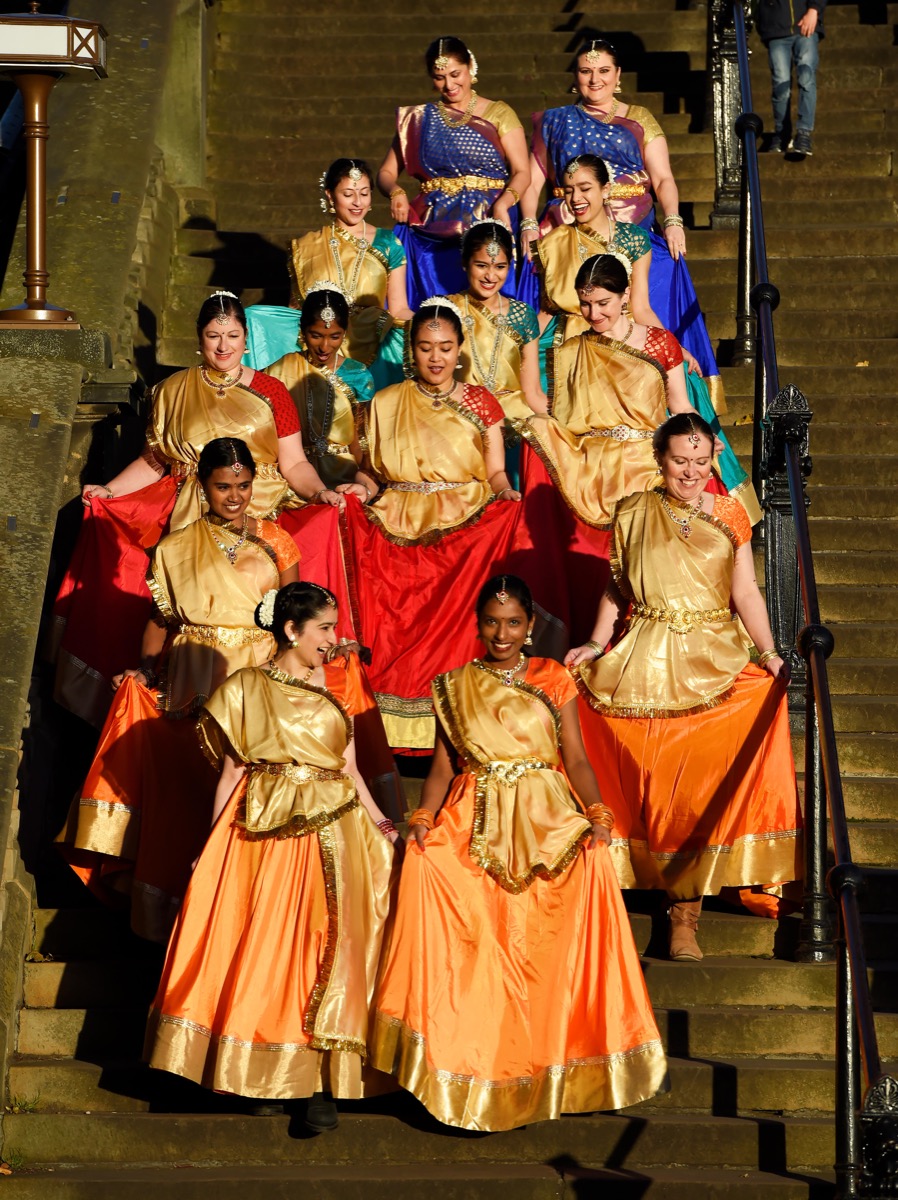15 Diwali Facts Everyone Should Know About the Hindu Festival

Diwali is one of the most revered Indian celebrations. The festival of lights, which comes every autumn, marks both the lunar new year and the metaphorical victory of good over evil, where knowledge trumps ignorance. It’s celebrated by many faiths—Hindus, Sikhs, Jains, and Buddhists.
Though the way this five-day long festival is celebrated differs in each religion and community, there is great pomp and circumstance across the globe when it comes to Diwali. New York City has its annual Diwali Motorcade in Queens. Little India in Singapore is decked up gorgeous lights. In London, Trafalgar Square is transformed into a space for performances and dances. In Nepal, Mother Nature and her bounty are worshipped during Diwali.
In India, we light our homes with mud diyas (oil lamps). We draw beautiful rangolis (patterns created using colored rice, dry flour, colored sand, or flower petals). Our calendars quickly fill up with party invites. And we worship the Goddess Lakshmi in order to bring prosperity into our lives. But there’s so much more to learn about this joyous holiday. Want to know more about Diwali? Here are 15 facts to brush up on before the festival kicks off!
1
Diwali can fall either in October or November each year.

If we go by the Gregorian calendar, Diwali can fall in October or November. The reason the holiday’s dates differ is because it’s based on the Hindu lunar calendar. The festival commences two days before the new moon, and ends two days after it. In 2019, Diwali falls on October 27th—the 15th day of Kartik, the holiest month of the Hindu lunar calendar. (The panchang, a nifty Hindu almanac, is a great resource to check accurate dates of festivals and auspicious times.)
2
It began as a harvest festival.

The origins of Diwali trace back to being a post-monsoon harvest festival, celebrating the bounty following the heavy rains. It was also a crucial time, because it was the last harvest before winter.
3
It also has major financial implications.

Diwali is also historically incredibly important for traders and money-lenders, notes Devdutt Pattanaik, an author and leading mythologist in India. “If the harvest was good, debts were repaid and both farmers and money-lenders celebrated their fortune,” he writes on his website. “If harvests were bad, this was a time of intense prayer and rituals in hope of a better future”
4
But it’s really all about the Goddess Lakshmi.

According to popular Hindu lore, the origins of Diwali are associated with the legend of samudra manthan (the churning of the ocean). Goddess Lakshmi—the goddess of wealth and prosperity, who is seen seated on a lotus—was churned from the ocean when the devtas and the asuras (gods and the demons) were locked in battle for Amrit (the nectar of life).
She came bearing treasures, says Pattanaik, including Kalpataru, the wish-fulfilling tree; Kamadhenu, the wish-fulfilling cow; Chintamani, the wish-fulfilling jewel; and Akshaya patra, the pot that is always overflowing with grain and gold.
5
She’s invited into homes with drawings of her feet.

During Diwali, Hindus hope for a visit from the Goddess Lakshmi, which is believed to bring prosperity. She is welcomed into homes with lamps kept burning through the night and tiny replicas of her feet facing towards the home. In addition to the rangoli, people also draw these artful padukas (imprints of Goddess Lakshmi’s feet) using white rice or rice flour paste.
6
The lights help guide Lakshmi.

The lighting of the lamps during Diwali is symbolic of the journey toward abundance and affluence, and indicates wealth and power, according to Pattanaik. Diwali is “the time to light lamps to drive away darkness, burst crackers to drive away silence, and eat sweets to drive away bitter and sour tastes,” writes Pattanaik.
The lamps help Lakshmi find her way into peoples’ homes, but they are also linked to one of the most popular Diwali traditions about Lord Rama, the seventh incarnation of Lord Vishnu (one of the principal deities of Hinduism). When he returned to his kingdom after a long exile of 14 years, having vanquished the demon king Ravana, he was greeted with avali (rows) of deepa (clay lamps) to symbolize the triumph of light over darkness. And that’s how the holiday gets its name!
7
Firecrackers were once burst with great gusto.

During Diwali, phuljhadis, anaars, bombs, snakes, and rockets are traditionally burst to welcome Goddess Lakshmi. But the popularity of pyrotechnics is waning, due to rising concerns about pollution and degrading air quality.
8
For the sake of the environment, laser shows are starting to replace firecrackers.

The Delhi government is encouraging Diwali celebrants to use green crackers, which would release at least 30 percent less particulate matter and 20 percent less gases—namely, sulphur oxide and nitrous oxide—according to The Hindu. The government also plans to hold laser shows in the heart of the city for four days, hopefully dissuading people from bursting firecrackers.
9
On the first day of Diwali, gold sells in record quantities.

All that glitters is gold on Dhanteras, the 13th day of the lunar month of Kartik and the first day of Diwali. Over time, it has become one of the most auspicious days to shop. Typically, women bought metal utensils and gold. But these days, sales of everything—ranging from electronics and luxury cars to gold and silver ornaments—reach record numbers year after year. According to The Times of London, in anticipation of Diwali, gold sales were up 32 percent in September and the first half of October in 2019, compared to the same period last year.
10
The first day of Diwali is also about cleaning.

In Hinduism, Dhanvantari, the lord of medicine, an avatar of Lord Vishnu (one of the principal deities of Hinduism), is also worshipped on the first day of Diwali. Hindus pray to him for sound health for themselves and for their loved ones. Since 2016, the government of India declared Dhanteras as National Ayurveda Day, honoring the physician’s compassion and wisdom. Now, it’s customary for homes to be scrubbed clean on this day.
11
Gambling is essential for bringing prosperity.

According to the Puranas, ancient Vedic texts, Goddess Lakshmi being born from the ocean required hard work. At the same time, she is chanchala, the fickle one. You have to be lucky to get Lakshmi to pay you a visit, says Pattanaik. Gambling requires both skill and luck, and during Diwali, people play cards to remind themselves of her whimsical nature, plus this keeps good fortune in circulation.
12
The final day of Diwali is when brothers visit their married sisters.

After the cleaning and gold shopping of the first day, the second, third, and fourth days of Diwali are devoted to decorating, feasting, praying, and gift-giving. Then, on the fifth and final day of Diwali, brothers visit their married sisters, who welcome them with a meal. “This was traditionally one of the few days when brothers could visit their married sisters’ homes, to ensure they were being well cared for,” according to the BBC.
13
A nimbu-mirchi totka (lime and chili ornament) is hung in the doorway.

The samudra manthan was not only the harbinger of good, according to Hindu tradition—it also churned out the inauspicious Goddess Alakshmi (a sibling of the Goddess Lakshmi), who emerged with poison, according to Utkarsh Patel, author, speaker, and a lecturer on comparative mythology at the University of Mumbai. To keep her at bay, several communities hang a lime with seven green chilis on their doorways—called a nimbu-mirchi totka—which respectfully appeases the sour- and spice-loving Goddess Alakshmi, protecting their homes from shadows.
14
There are tons of fancy galas.

Weeks before Diwali, invites are sent out for tons of parties. People dressed to the nines in finery come out to gamble, playing teen patti (flash) or poker. Farm parties in Delhi are legendary, with traditional delicacies and champagne overflowing in venues bedecked like palaces.
15
You’ll probably pack on a few pounds during Diwali.

During Diwali, sugar is fashioned into khilone (toys) and hathris (towers). Try the unusual kheel-batasha (puffed rice and sugar drops), or gorge on the sweet mawa kachori, the deep fried shakkar pare, the delectable pinni from Punjab, and all that wonderful dry fruit going around. With the copious amounts sugar circulating during Diwali, it’s not unheard of for revelers to gain a few pounds. As we joke, you’ll be waddling after Diwali. But hey—at least you won’t be hungry! And for more awesome trivia about the world around us, check out the 50 Fun Facts About the World That Will Put a Smile on Your Face.
To discover more amazing secrets about living your best life, click here to follow us on Instagram!